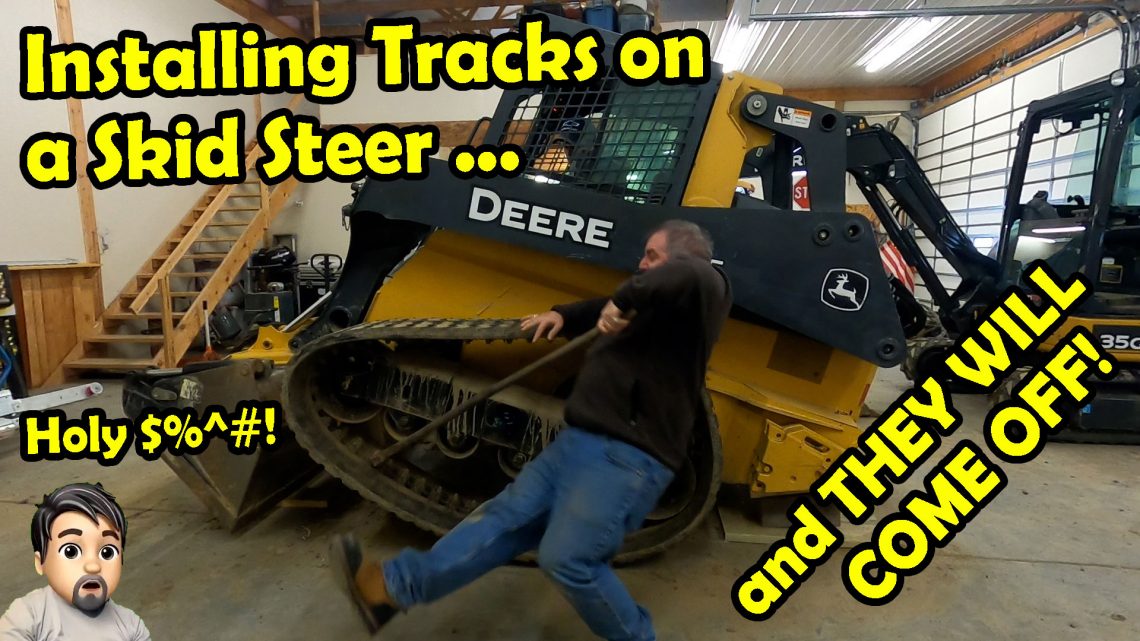
Installing tracks on a Skid Steer is no easy job, and finding those tricks to install can also be tricky. However, one thing for sure, I’m glad I have a 35G Mini to help with the job!
After some research, I finally found the right place to purchase my tracks. Rubber Track Warehouse, the makers of Grizzle Rubber Tracks, was the answer. These guys had everything I was looking for, including excellent sales service and fast delivery.
The next trick was finding the right tracks for my John Deere 323E. In determining the correct size tracks, there are a few things you need to know about selecting the right track type, style along with getting the right size to fit your machine.
(Source: https://www.rubbertrackswarehouse.com)
Three Steps to Measure Your Rubber Track Size.
- Measure the Width of the Track in millimeters.
- Measure the Pitch in millimeters which is the distance between the center two links.
- Count the total number of links in the Track. Links are also known as drive lugs or teeth.
Common Rubber Tracks

How to Find / Measure Your Guide Size
What are rubber track guides and guide systems? The guiding system is the system of wheels that interlock with the links inside a rubber track. The part of the rubber track that interlocks with the guide system are called the guide. The guide is made up of links, and in-between the links, it’s essential to know the guide’s size to prevent your replacement track from breaking, jamming, or being thrown (jump track) from the guide system.
- Measure the distance between the outer bottoms of two links across from each other. This is called the Outside Guide Bottom (OG).
- Measure the distance between the inner bottoms of two links across from each other. This is called the Inside Guide Bottom (IG).
- Measure the height of the link from outside the trough. This is called the Outside Height (OH).
- Measure the height of the link from outside the trough. This is called the In
Rubber Track Rollers Types
There are two main types of rubber track rollers (center and flange) and two main sub-types of each. Center rollers run between the links of a rubber track. These two types of center rollers are usually called W and X. Flange rollers run along the outside of the links of a rubber track. The two types of flange rollers are usually called Y and Z.
This project took about 4 hours, including snow plowing the driveway.
VIDEO TIMELINE:
00:00 = Unloading Tracks from Trailer
03:20 = Out of the cold and into the Barn
04:10 = Building an InfoGraphic describing track size details
04:47 = Understanding Track Sizes (InfoGraphic)
05:14 = Different Types of Track Patterns
06:00 = Setting of John Deere 323E Skid Steer on blocks
10:50 = Begin removing the tracks by relieving grease from idler wheel ram
13:35 = Using a bar to loosen the Track
16:00 = Using 2×4 to help remove the Track off the idler wheel
16:49 = First Track is removed
19:20 = First Track installed, now time to tighten the Track
22:54 = Removing the Track on the other side
25:22 = Second Track Removed, time to install the other 500-pound track
26:34 = Second Track Installed, now time to double-check both tracks
28:44 = Test drive the new tracks plowing the driveway
35:18 = Snow Plowing finished now headed back to the warm barn
35:44 = Final Wrap-Up and discuss performance
Thanks for watching, and please share with your friends
TOOLS FOR THE MAKING:
- Special Thanks to Teddan Shaw for helping with the install
- From LandPro Equipment: John Deere 323E Skid steer
- From LandPro Equipment: John Deere 35G Mini Excavator
- From Rubber Tracks Warehouse: 16” Zig-Zag Rubber Tracks for Skid Steer
- A pillow for my butt!

